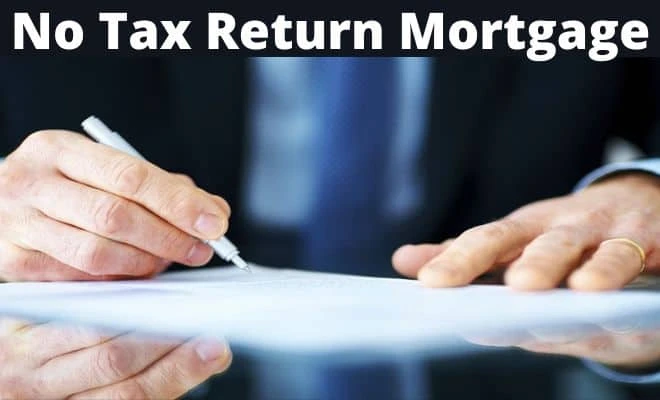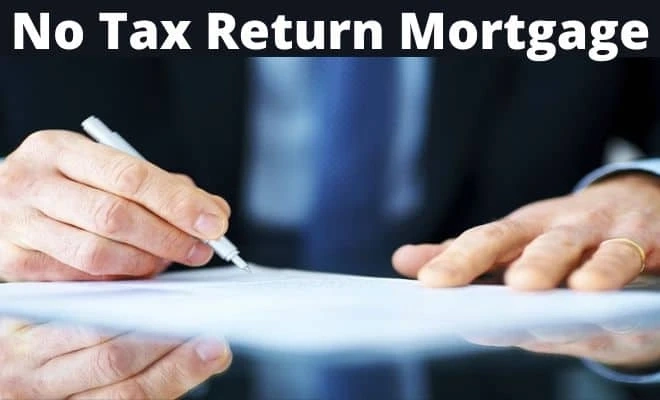
Purchasing a home is a significant milestone for many individuals and families. However, the process of securing a mortgage can be daunting, especially for those who do not have traditional proof of income such as tax returns. For self-employed individuals, freelancers, and others with unconventional income sources, no tax return home loans offer a viable alternative. This guide will explore what no tax return home loans are, who they are for, their benefits and drawbacks, and how to qualify for one.
What Are No Tax Return Home Loans?
No tax return home loans, also known as non-traditional or alternative documentation loans, are mortgage options designed for borrowers who cannot or prefer not to provide tax returns as proof of income. Instead, lenders rely on other forms of documentation to assess a borrower’s ability to repay the loan. This might include bank statements, profit and loss statements, or other financial records.
Who Benefits from No Tax Return Home Loans?
Several groups of people may find no tax return home loans particularly beneficial:
Self-Employed Individuals
Self-employed individuals often have complex financial situations. Traditional lenders typically require tax returns, which might not accurately reflect their income due to deductions and write-offs. No tax return loans provide an alternative method for verifying income, making it easier for self-employed individuals to secure a mortgage.
Freelancers and Gig Workers
Freelancers and gig workers often have variable incomes, which can complicate the mortgage approval process. These individuals may not have consistent monthly paychecks, but they can provide bank statements that show their cash flow over time. No tax return loans allow freelancers to demonstrate their financial stability without relying on tax returns.
Real Estate Investors
Real estate investors who own multiple properties may not want to provide tax returns that reveal their entire portfolio. No tax return home loans enable them to use rental income and other financial documents to qualify for a new mortgage.
Types of No Tax Return Home Loans
There are several types of no tax return home loans, each with its own set of requirements and benefits. Here are the most common ones:
Bank Statement Loans
Bank statement loans use the borrower’s bank statements to verify income. Lenders typically require 12 to 24 months of bank statements, which they analyze to determine the borrower’s average monthly income. This type of loan is ideal for self-employed individuals with substantial deposits that reflect their income more accurately than tax returns.
Stated Income Loans
Stated income loans, also known as “liar loans,” allow borrowers to state their income without providing extensive documentation. These loans are primarily based on the borrower’s credit score and the value of the property being purchased. While they are easier to obtain, they often come with higher interest rates and stricter lending criteria to offset the increased risk for the lender.
Asset-Based Loans
Asset-based loans focus on the borrower’s assets rather than income. This type of loan is suitable for individuals with substantial savings, investments, or other assets that can be used as collateral. Lenders assess the borrower’s ability to repay the loan based on the value of their assets.
Advantages of No Tax Return Home Loans
No tax return home loans offer several benefits for borrowers with unconventional income sources:
Flexibility in Documentation
One of the primary advantages of no tax return home loans is the flexibility in documentation requirements. Borrowers can use various financial documents to prove their income, making it easier to qualify for a mortgage.
Faster Approval Process
Since these loans do not require extensive tax documentation, the approval process can be quicker. This is particularly beneficial for borrowers who need to secure financing promptly.
Tailored for Non-Traditional Borrowers
No tax return home loans are designed specifically for individuals with non-traditional income sources. This tailored approach makes it easier for self-employed individuals, freelancers, and real estate investors to qualify for a mortgage.
Disadvantages of No Tax Return Home Loans
Despite their benefits, no tax return home loans also have some drawbacks that borrowers should consider:
Higher Interest Rates
Lenders typically charge higher interest rates for no tax return home loans to offset the increased risk associated with less conventional income documentation. Borrowers should be prepared for potentially higher monthly payments.
Stricter Lending Criteria
While the documentation requirements may be more flexible, lenders often impose stricter lending criteria, such as higher credit score requirements and larger down payments. Borrowers need to meet these criteria to qualify for a loan.
Limited Availability
Not all lenders offer no tax return home loans, which can limit borrowers’ options. It’s essential to shop around and find a lender that specializes in these types of loans.
How to Qualify for a No Tax Return Home Loan
Qualifying for a no tax return home loan involves several steps. Here are some tips to help you navigate the process:
Gather Alternative Documentation
Since you won’t be providing tax returns, you’ll need to gather other forms of documentation to prove your income. This might include bank statements, profit and loss statements, or asset documentation. Make sure these documents are organized and up-to-date.
Maintain a Strong Credit Score
A strong credit score is crucial when applying for a no tax return home loan. Lenders use your credit score to assess your creditworthiness, so it’s essential to maintain a high score. Pay your bills on time, reduce your debt, and avoid opening new credit accounts before applying for a mortgage.
Save for a Larger Down Payment
Lenders may require a larger down payment for no tax return home loans to mitigate the risk. Aim to save at least 20% of the property’s purchase price for your down payment. A larger down payment can also help you secure better loan terms.
Work with a Knowledgeable Lender
Finding a lender who understands no tax return home loans is crucial. Look for lenders who specialize in these types of loans and have experience working with borrowers with non-traditional income sources. A knowledgeable lender can guide you through the process and help you find the best loan options for your situation.
Conclusion
No tax return home loans provide a valuable alternative for individuals with unconventional income sources. Whether you’re self-employed, a freelancer, or a real estate investor, these loans offer flexibility in documentation and can make it easier to qualify for a mortgage. However, they also come with higher interest rates and stricter lending criteria. By understanding the benefits and drawbacks, gathering the necessary documentation, maintaining a strong credit score, and working with a knowledgeable lender, you can successfully navigate the process and secure the home loan that best suits your needs.


